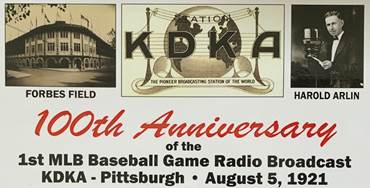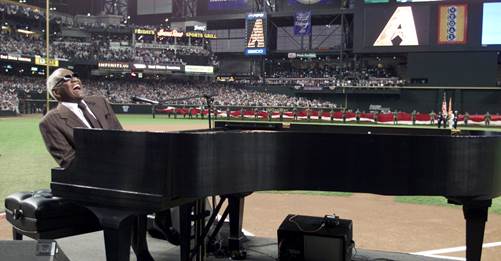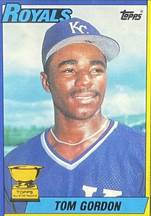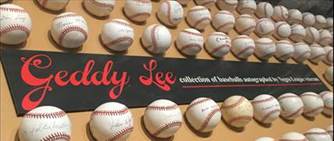Before I get to my baseball post, I want to pause a moment in remembrance of my long-time friend Wayne Tenenbaum. Wayne died on January 23 at the age of 80. A couple of years ago, I wrote a tribute to Ray Webb who I dubbed the “Most Unforgettable Character I Ever Met.” On reflection, Wayne might be tied with Ray for that title. Or maybe he is the most unforgettable from a different genre. The common trait was that they both made me laugh for decades.
I shared my tribute of Wayne with his family and many friends, but I’m sure I’ve missed some. So I am attaching a link for those who knew Wayne. And also for those who did not – you would have loved Wayne too. Encyclopedic mind. Mentor. Stand-up comedian. Assessor. Entrepreneur. Teacher. Numbers guy. Collector of baseball cards, music CDs, books and much more. Pinball wizard. Pac-Man aficionado. Poker. Bridge. Gin rummy. Backgammon. Food connoisseur. Bryant’s. Princess Garden. Rock ‘n’ roll. Linda Ronstadt. And so much more. We were close friends for 57 years.
Click here for the tribute to Wayne. Below, the two of us in New York about 40 years ago.

And now to return to our regular programming.
The Royals on TV and Radio: Several years ago, Google came to KC as a test city for a proposed nationwide cable TV network. We subscribed and have liked the system. But Google no longer does. It’s being scrapped, and we were given until March 31 to find an alternative. A suggestion from Google is that we keep their internet service and stream our TV channels via YouTube TV (owned by Google). But the Royals (on Bally) aren’t carried by YouTube TV. So that’s a non-starter. The streaming service that currently carries Bally is DirecTV, but for now we are sticking to cable and have switched over to Spectrum.
Many of our friends with Google have decided that it’s time to cut the cable cord. Most seem to be going to YouTube or Hulu with the intent to keep up with the Royals on the radio. For those of us who fell in love with baseball when it was only on the radio, this is a nostalgic and intriguing alternative. I can remember when baseball on the radio was our soundtrack of summer.
The pace of baseball is perfect for radio listening. You can do other things. Sit out on the porch. Do light reading. Be in your car. Paint a room (not me, but for some). The cool thing about radio broadcasters is that they tell you what is going on in the game. I’ll borrow from Jonathon Schwartz in the New York Times:
“Radio amplifies the baseball thought of the moment; it rolls the wine of the game around on the palate, so that those few seconds of a double play or brilliant catch, or the fraction of a second of a simple slider nicking the outside corner of the plate, heard not seen, invite an intimate scrutiny, a private replay fashioned by the citizen of the game who has tuned to the radio…It is not unlike the magic of books, that special arrangement between author and reader, the two stuck together on a living room couch or in an airplane coach section…The story unfolding on the radio, caught in great chunks of listening time over a Labor Day weekend, or picked up piecemeal off a taxi radio or a dangling speaker in a boutique or a portable at top blast passing by on a beach…like an ancient tom-tom signaling through time.”

Another quote that I like comes from President Gerald Ford: “I watch a lot of baseball on the radio.”
I’ll still likely be following most of my baseball on TV (after the lockout ends). But it’s a different experience. The game and stats, and now sometimes the gambling odds, are on the screen. This invites the announcers to stray from the game for stories and opinions that often have little to do with what is happening on the field. I know it’s hard to fill every second of airtime and not every announcer can be Vin Scully. This can become grating over a three-hour game. So it is not unusual for Rita and me to turn down the sound and just watch the game.
Maybe Google did me a favor by rekindling my interest in baseball on the radio. I plan to tune in more often this season. The play-by-play voice on Royals radio is Denny Matthews (below) who has been with the team since their inaugural season of 1969. Denny has been inducted into the broadcasting wing of the Hall of Fame and is the third announcer to broadcast for the same team for more than 50 years (Vin Scully and Jaime Jarrin of the Dodgers are the other two).

Baseball on the Radio – 100 Years and Counting: On July 2, 1921, Jack Dempsey successfully defended his heavyweight title by knocking out Frenchman Georges Carpentier. It was boxing’s first million-dollar match, but more importantly, it was the first sporting broadcast via radio. Baseball was not far behind. On August 5, 1921, the first radio broadcast of a baseball game was made from a box seat at Forbes Field in Pittsburgh.

But baseball was slow to embrace radio. Owners feared that fans would stay home listening to games rather than coming to the park – meaning lost ticket and concession revenue. Initially, only a few games were broadcast, like Opening Day, the All-Star Game and the World Series. It took until 1938 for all MLB teams to be on the radio.
The owners finally came around to understanding that radio broadcasts promoted the game and encouraged fans to come to the ballpark, plus broadcasting rights were a source of income when connected to on-air advertising. A good illustration of this evolution was right here in Kansas City…
Kansas City Blues – Walt Lochman: In Hot Stove #21, I wrote about Walt Lochman who was the radio broadcaster for the minor league Kansas City Blues from 1935 to 1942. I was born in 1941, so I was not yet listening to the Blues, but I did have a connection.
When I was 16, I bought a car as soon as I saved enough money from working at Curt’s Market. Jim Graham, a pal since grade school, and Bill Lochman, a new friend in high school, invited me and my 1954 Ford to join their hot rod club, the Draggin’ Diplomats. My parents were not keen on the hot rod thing, but passed along some info new to me on my friend Lochman – they said that Bill’s dad Walt was well known to them as the early radio voice of the Blues. Bill of course confirmed this to me, but I never met his dad who had died in 1954.
Walt Lochman started in radio in 1927, working for various stations as a singer, announcer, talk show host and administrator. In 1935, he approached Blues’ owner Johnny Kling to get permission to broadcast the games. Kling shared the worry of other baseball owners who were hesitant to employ radio because they thought it would hurt attendance. But Kling agreed to a 10-game test, and it was a smashing success. Lochman would go on to broadcast over 1,000 games through 1942.
Lochman started as a novice, but he had a mentor of sorts. His Uncle Lou had lost his vision at age 65, and after broadcasts, Lochman would ask Uncle Lou how he could improve. Lochman said he kept his Uncle Lou in mind when broadcasting, striving to give him the nearest possible complete picture of the action on the field. He developed a pattern very popular with the fans, and annual attendance at the games grew from 100,000 to 300,000. He was named most popular sportscaster in the country in a 1936 “Wheaties Poll.” In 1940, he was named the top minor-league announcer in the nation in a poll conducted by The Sporting News.
Below, an ad that ran on the tire covers of 75 Yellow and Terminal cabs.

In 1939, Lochman covered an exhibition game in Kansas City between the Yankees and their Triple-A affiliate Blues. Below, Walt Lochman interviews brothers Joe DiMaggio of the Yankees and Vince DiMaggio of the Blues. Lou Gehrig was in the lineup that day for three innings, his last game ever. He left from KC’s Union Station the next day for the Mayo Clinic where he would receive his diagnosis of ALS.

One of the biggest future Yankee stars playing for the Blues in 1939 and 1940 was Phil Rizzuto. In the flyer (below) for “Radio Appreciation Night” at the stadium, Lochman is shown at the mike and Rizzuto is second from the right on the front row. Rizzuto became a broadcast legend in his own right, covering games for the Yankees for 40 seasons from 1957 to 1996. His famous catchphrase as a broadcaster was “Holy Cow.” In 1977, a recorded broadcast by Rizzuto went platinum in record sales. More on that story in Lonnie’s Jukebox below.

Kansas City Blues – Larry Ray: I started listening to the Blues as a kid, and the broadcaster I grew up with was Larry Ray. My mom would let me leave on the radio when I went to bed, and I fell asleep listening to Larry Ray calling the games. The sponsors of the broadcast were Muehlebach Beer and Kroysen Beer.

Ray started doing the Blues on WHB radio in 1950 and got high marks for his work. Radio-TV Mirror, was effusive in praise:
“Down in Kansas City, there’s a sportscaster with the qualities of three big sports personalities in radio: the rapid fire of Bill Stern, the suaveness of Ted Husing and the knowledge of Red Barber. Yet he is completely himself…WHB’s Larry Ray is so good that television fans, when witnessing a game that is televised and broadcast simultaneously by rival stations, turn off the audio and tune in Larry on WHB.”

Ray covered several sports for the station, and he was a regular contributor to Swing, the WHB magazine. Note the “Attention” line of this article from Swing.

KMBC (980) and WHB (710) in 1955: The year 1955 brought major changes for WHB and KMBC on the AM dial (there was little FM in those days).
Cook Paint, the owner of WHB, sold the station to Storz Broadcasting in 1954. Storz owned several stations and was converting them to a Top-40 format for popular music. Baseball broadcasting did not fit their plans for 1955.
The big change on the baseball side in 1955 was that the Philadelphia A’s moved to Kansas City. Radio broadcast rights for KC’s new major league team were picked up by KMBC, and Schlitz Beer signed on as the first big sponsor. Larry Ray moved over to KMBC and brought along Merle Harmon who had joined Ray for the Blues games in 1954. Both Ray and Harmon had been mentored by Walt Lochman early in their careers.
I was in high school in 1955 and had to divide my time between KMBC for the games and WHB for the emerging rock ‘n’ roll genre. Teenagers quickly jumped on the Top-40 bandwagon, but there was an early flaw. WHB often played covers by white artists instead of the originals by black artists. The most egregious to me were the covers by Pat Boone of “Tutti Frutti” (original by Little Richard) and “Ain’t That a Shame” (original by Fats Domino). Many of us switched to KUDL (1380 on the dial) to hear the real deal. WHB reversed course, and we ended up with two good stations vying for the teenage audience.

This leads to another Lochman story. In late 1959, I was back in KC for the holidays during my first year in college. WHB was playing down the Top-40 hits for the year, but they could not find their copy of #5, “Venus” by Frankie Avalon. I had the record in my 45-rpm record collection and called Bill Lochman. We hustled my record to the downtown studio of WHB, not in time for the final countdown, but it played later on the air. We got access to the studio because Bill knew a salesman at the station – his older brother Walt, another son of Blues broadcaster Walt Lochman.
Postscript: I never got my record back from WHB. After learning of my plight a few years ago, my friend Larry Brewer found a replacement for me that now resides in the “Venus” slot in my old record cases. Click here to listen.
St. Louis Cardinals – Harry Caray: WHB was 710 on the AM dial. When I was listening as a kid, I could move the dial slightly over to 680 (KFEQ) and catch Harry Caray broadcasting the Cardinals. KFEQ was a station in St. Joseph carrying the Cards, and reception was not great – lots of static. I don’t have any specific memory, but this would have been in the days of Musial, Mays, Robinson, etc. in the National League.
At that time, St. Louis was the western outpost of both the National and American Leagues (Cardinals and Browns). So Harry Caray was heard over a large region of listeners who became Cardinal fans. I was not in that category because the Blues were a farm team of the Yankees – so I was a Yankee fan. That ended when the A’s moved to KC in 1955.
Below, Harry Caray at the mike in 1951 when the Cardinals’ broadcasts were sponsored by the Griesedieck Brothers brewery. Sponsorship changed when the team was purchased by Anheuser-Busch in 1953.

In October of 1969, Caray was surprisingly fired after 25 years broadcasting the Cardinals. He said he did not know why he was let go, but Caray poked back at Anheuser-Busch in his departing press comments by posing with a can of Schlitz. In his 1989 book, Caray scoffed at rumors that he was fired for having an affair with the wife of an Anheuser-Busch executive. “At first these rumors annoyed me. Then they began to amuse me. They actually made me feel kind of good. I mean, let’s face it…I wore glasses as thick as the bottom of Bud bottles, and as much as I hate to say it, I was never confused with Robert Redford.” Caray went on to do just fine in Chicago.

Ray Charles and Vin Scully: Remember the story from above about Walt Lochman and his blind Uncle Lou? Fast forward to Vin Scully and Ray Charles.
In 1995, after Ray Charles had finished an interview with Bob Costas, Ray said to Costas, “You know who I would really like to meet? Vin Scully…because I love baseball. But you have to understand, to me the picture means nothing. It’s all the sound. And Vin Scully’s broadcasts are almost musical, so I enjoy baseball so much more listening to him.”
Costas took Ray to Dodgers Stadium and introduced him to Scully who sat down with Ray for a combination baseball and music discussion. Costas: “Vin had a nice experience. And Ray Charles – and I mean this sincerely – he’s Ray freaking Charles – I believe he had one of the great experiences of his life.”
On October 28, 2001, in the wake of 9/11, Ray sang “America the Beautiful” before Game 2 of the World Series (click here). Ray died in 2004. In 2020, Vin Scully marked Ray’s 90th birthday anniversary with this video tweet

Cameron Black and Tom Wyrsch: I met Tom Wyrsch about 50 years ago. We worked on several political campaigns together and both of us have been chairman of the Jackson County Democratic Committee. I held the post from 1974 to 1978 and Tom was chair from 2000 to 2002 and 2012 to 2016.
Tom recently told me a story about Cameron Black, an employee of Alphapointe, an organization that provides employment and services for those who are blind and visually impaired. Cameron was born blind, but that is not a barrier to his obsession with sports. He has a blog (“The Blind Quarterback”) and is a big fan of the Chiefs and their radio announcer Mitch Holthus who awakened Cameron’s passion for football. “Mitch took the empty canvas of my mind and used his descriptions, knowledge, analogies and phrases such as ‘sweet nectar of the end zone’ and, of course, his triumphant yell of ‘touchdown Kan-zus City’ to let me see the game.”
With the help of people like Holthus and sportswriter Sam McDowell, Cameron’s story became known and led to him throwing out the first pass at a Chiefs game. He prizes his autographed Patrick Mahomes football, signed to “The Blind QB.” Cameron has published a wonderful essay titled “Blind Passion: Loving a Sport You Can’t Even See” (click here). Below, Cameron and Holthus.

Having mastered football, Cameron moved next to baseball. He was listening to a Royals game with some blind friends when Denny Matthews said something about the slider having a lot of movement. He wanted to know more about that and asked Tom Wyrsch, a frequent volunteer at Alphapointe, if he could help. Tom schooled Cameron on some basics of the game and also enlisted his pastor, Jason St. John, who pitched college ball. Jason taught Cameron how to hold the ball for different pitches and demonstrated the “movement” the ball makes as it reaches the plate.
After that, Tom and Cameron began playing catch, starting at about 10 feet and working their way up to 40 feet. They practiced three days a week for a year before Covid hit, and then picked up again in 2021, leading to Cameron throwing out a first pitch at a Monarchs game. They will restart this spring with the hope of Cameron throwing out a first pitch at a Royals game.
Below, Cameron and Tom playing catch. Or are they “having” a catch? The debate on terminology arises from time to time because of Kevin Costner’s line to his father in Field of Dreams: “Do you want to have a catch?”

Tom Gordon, Stephen King and Baseball on the Radio: Tom “Flash” Gordon pitched for the Kansas City Royals from 1988 to 1995. He became a free agent and signed with Boston in 1996. In 1998, he led the league in games finished (69) and saves (46).

Author Stephen King is a baseball fan and roots for the Red Sox. In 1999, the year after Tom Gordon finished and saved so many games for the Red Sox, King released his book The Girl Who Loved Tom Gordon.

The storyline (excluding the Stephen King scary stuff): A nine-year-old girl is lost in the woods for several days. Her key survival items are some food and water and her Walkman. To keep her mood up, she listens to the Red Sox games featuring her favorite player and “heartthrob,” Tom Gordon. When confronted by a bear, she stops his advance by winding up and hitting him in the head with her Walkman. Later, recovering in the hospital, she holds her Red Sox cap autographed by Tom Gordon and points toward the sky, just as Tom Gordon does when he closes a game.
Loose Park Update: This past Monday, the temperature went to 65 degrees, and I walked Loose Park. Koi in abundance. Rita is not taking long walks these days – soon to get a hip replacement.

On Tuesday night, it began snowing. The temperature this morning is 7 degrees. The koi will soon be under a sheet of ice.
Lonnie’s Jukebox (1) – Radio Edition: Since the theme of the post is the radio, I looked for songs with radio in the title. The list is long. But I’ll just select 5 – this post is already long enough. Click on the song titles to listen.
“The Spirit of Radio” by Rush (1980). Very interesting music video. I’m starting with this one because Rush lead singer Geddy Lee is featured in my Wayne Tenenbaum tribute (linked at the beginning of this post). Wayne played a role in Geddy Lee donating 400 autographed baseballs to the Negro Leagues Baseball Museum.

“You Turn Me On, I’m a Radio” by Joni Mitchell (1972). You can no longer hear this song on Spotify. Joni pulled her music last week, saying she did not want to share a platform with Joe Rogan’s vaccine misinformation.
“The Radio Song” by Joe Walsh (1987). Starts off with Wolfman Jack.
“Turn On the Radio” by Reba McEntire (2010). In the video, Reba subjects her two-timing boyfriend to the sounds of dozens of radios. She says he will need to turn them on if he wants to hear her voice in the future, warning him to not call, tweet or text.
“Radio Ga Ga” by Queen” (1984). This version is from the joyous concert performance for Live Aid at Wembley Stadium in 1985. A year later, Stefani Joanne Angelina Germanotta was born. When she started her professional singing career, her then-producer/boyfriend told her she reminded him of this Queen song. She liked the sound of it and added “Lady” to create her professional name of Lady Gaga.
Lonnie’s Jukebox (2) – Meat Loaf and Phil Rizzuto: In 1977, Meat Loaf released his Bat Out of Hell album that included the iconic song “Paradise By the Dashboard Light.” I searched the Hot Stove archives and found that I have already played this song three different times in Lonnie’s Jukebox. But I must play it again. Partially because the song matches up with the “radio” topic of this post and includes a narrative by Phil Rizzuto. But mainly because Meat Loaf died on January 20 at the age of 74. An encore is in order.
The song involves a couple who are “barely 17 and barely dressed” in a car. The dashboard light comes from the radio that is tuned to a baseball game. The big question is whether the boy (Meat Loaf singing) will get to second base, third base and score with the girl (Ellen Foley singing). At a break mid-song, Phil Rizzuto is heard doing a play-by-play of a runner getting to second base, then to third (“Holy cow, stolen base”), then headed home on a squeeze play (It’s gonna be close, holy cow, I think he’s gonna make it!”). You will need to listen to see if he did.
In 1994, in a nice coincidence, both Meat Loaf and Rizzuto were in attendance at the All-Star Game. Meat Loaf was there to sing the National Anthem. Rizzuto had been given the title of captain of the American League team, an honor bestowed because Rizzuto was being inducted into the Hall of Fame later that month. There is a cool MLB clip of Meat Loaf taking batting practice at the game and talking with the all-stars and Rizzuto (click here; 3 minutes). The rest of 1994 was not as fun for baseball. On August 12, the players strike began and the rest of the season was cancelled.

The two Meat Loaf selections below offer quite the contrast. From operatic to pounding rock.
“Star Spangled Banner” (1814) by Meat Loaf (1994). His rendition at the All-Star Game was highly praised.
“Paradise By the Dashboard Light” by Meat Loaf (1977). This link is to a live performance with Karla DeVito doing the female call-and-response with Meat Loaf (rather than Ellen Foley on the recorded version). Rita and I saw Karla sing the song with Meatloaf at the Uptown Theater during the Bat Out of Hell tour in 1978. Be prepared to for a rousing live performance.
RIP Meat Loaf.